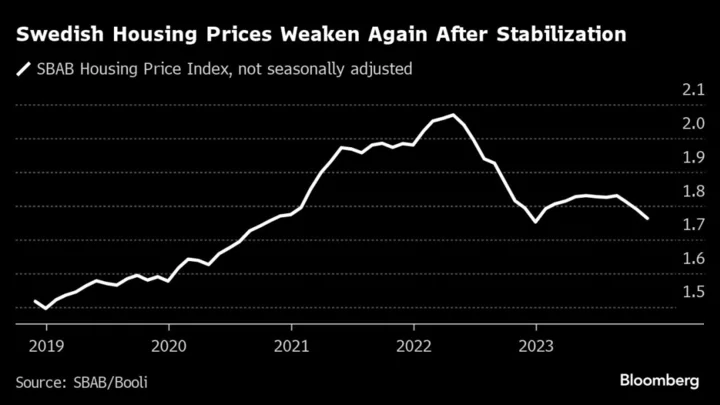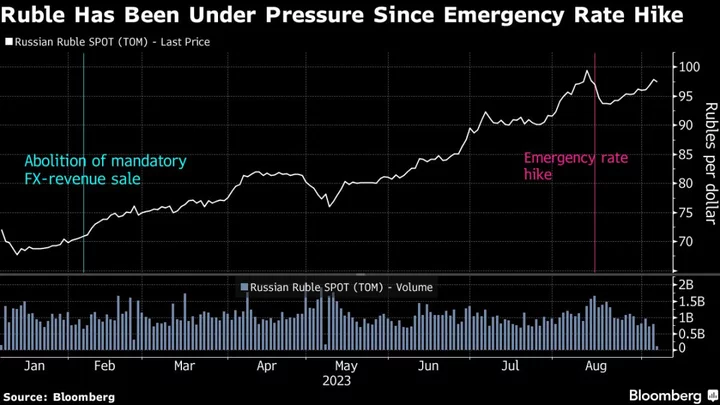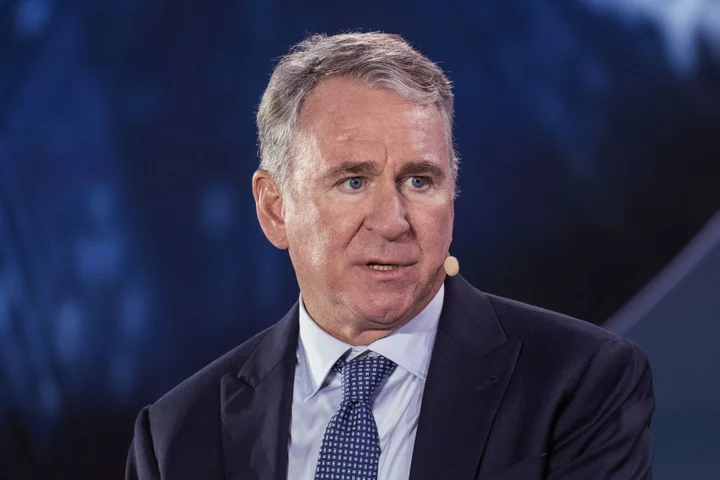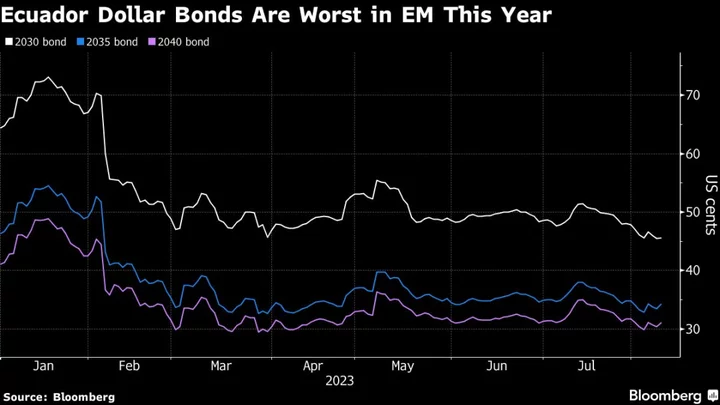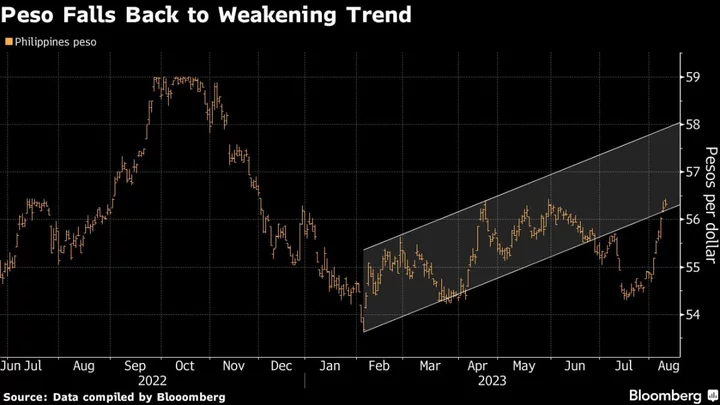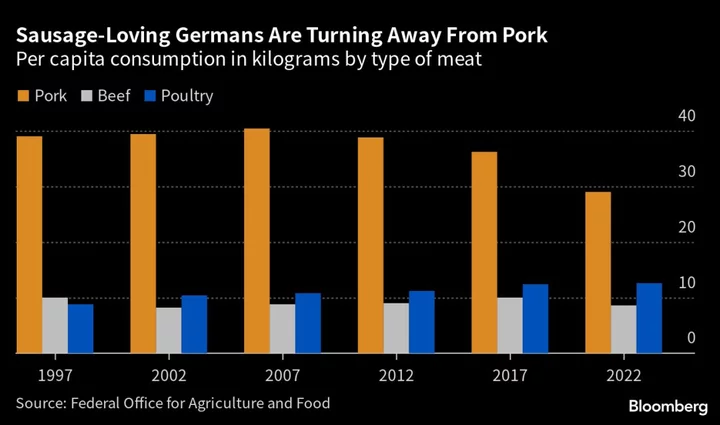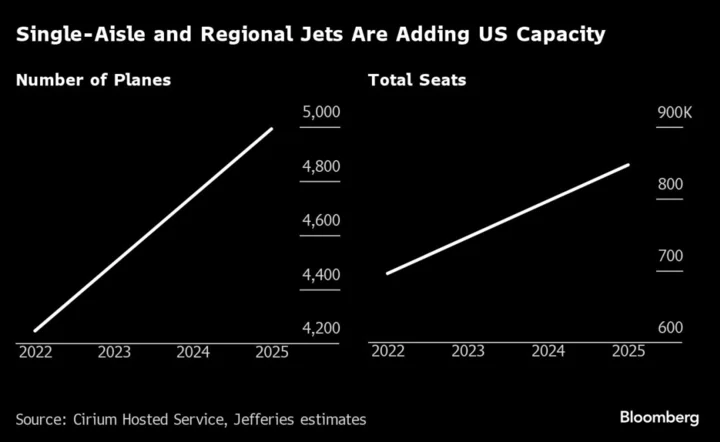Housing prices in Sweden have resumed a decline as the Nordic nation’s economy is in a recession and borrowing costs continue rising.
In November, home prices fell by 1.4% from the previous month, according to data published Saturday by state-owned lender SBAB. The reading indicates that after a period of stabilization this year, Sweden’s housing market may be entering a second phase of what was one of the world’s worst housing routs in 2022.
“Since the peak in spring last year, prices have now fallen by almost 15% across Sweden,” the bank’s chief economist, Robert Boije, said in a statement. “We are clearly approaching the total decline of 20% that we have long forecast.”
Forecasters are still split on whether the situation is likely to get worse before it gets better, with analysts at Danske Bank A/S saying this week they expect prices to remain unchanged or rise slightly, rather than fall again.
As the Swedish central bank has taken its benchmark rate to 4% from zero in less than two years, households’ borrowing costs have shot up. Most Swedish homeowners have interest rates fixed over three months, and in the past 18 months, the average rate on outstanding mortgages has increased to 3.8% from 1.5%.
While some relief could be in store as the Riksbank last week refrained from a ninth consecutive rate hike, many owners of apartments can still expect to see expenses continue rising as housing co-ops will have to increase fees to compensate for higher credit costs.
Adding to the clouds on the horizon, the Swedish economy has entered a recession that is expected to lead to two consecutive years of output contraction.

